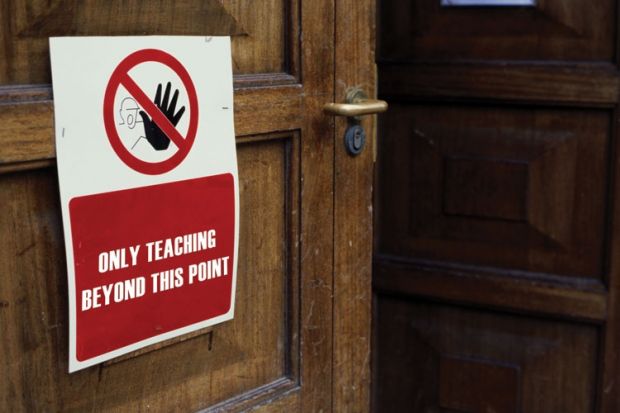In a pamphlet on Lord Robbins’ seminal 1963 report into higher education, published by the Social Market Foundation on 21 October, the universities and science minister compares student contact hours in 1963 with their current levels.
Using data from Lord Robbins’ report, which ushered in the expansion of the university sector, and figures published by the Higher Education Policy Institute and Which? in 2013, Mr Willetts concludes “there was not a massively higher amount of teaching time at the time of Robbins compared to now”.
Mr Willetts also used the Hepi/Which? survey to suggest “institutions have been keeping pace with the early 1960s on small group teaching – and in some cases improving.
However, sharing a panel with Mr Willetts for the report’s launch, Gervas Huxley, teaching fellow in the University of Bristol’s economics department, said it was “fantastical” to claim there was now more teaching in small classes than 50 years ago.
“I just don’t believe it”, said Mr Huxley, who added that preserving class sizes was “impossible” owing to the historic underfunding of universities over the past 40 years and the increased pressure on academics to conduct research for the research excellence framework.
“In my university department, no student is ever in classes with less than five people,” said Mr Huxley. “I have never taught in classes of 10 or less,” he added, saying he was sure that his experience of teaching in higher education was not unique.
Mr Willetts said his analysis was based on data collected by Hepi and Which?, two organisations which had proved reliable in the past.
“It is just possible that even then [1963], there was a problem [with class sizes]?” Mr Willetts added.
But Nicola Dandridge, chief executive of Universities UK, told the event in central London on 21 October that comparing contact hours in 1963 with 2013 was not a helpful exercise because there was now “blended learning” involving study-skill classes, online lessons and work placements.
The “narrow focus on contact hours” was a “sterile” debate, said Ms Dandridge. “Parents are asking about contact hours, but it is not what students are [asking for],” she said.
“What we are hearing is the importance of teaching and learning and universities are responding to that in more imaginative ways than just contact hours,” she added.
In his paper, Mr Willetts also says there is an excessive focus on research in universities, which had become “lopsided away from teaching”.
This theme was taken up by Alasdair Smith, former vice-chancellor of the University of Sussex, who bemoaned a “catastrophic imbalance between research and teaching”.
“Vice-chancellors sit on committees where they think about getting rid of staff who do not do enough research,” said Professor Smith, who led Sussex from 1998 to 2007.
“Vice-chancellors also sit on committees where they discuss promoting staff who are inferior teachers,” he added.
Register to continue
Why register?
- Registration is free and only takes a moment
- Once registered, you can read 3 articles a month
- Sign up for our newsletter
Subscribe
Or subscribe for unlimited access to:
- Unlimited access to news, views, insights & reviews
- Digital editions
- Digital access to THE’s university and college rankings analysis
Already registered or a current subscriber? Login




